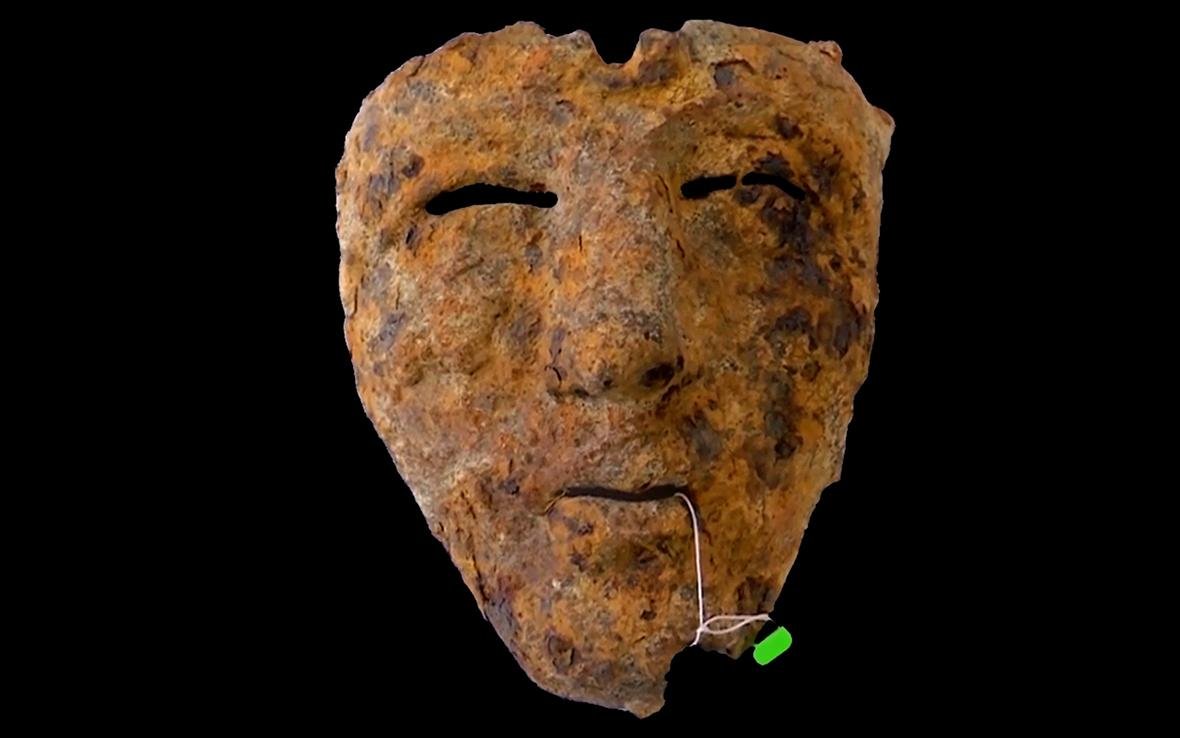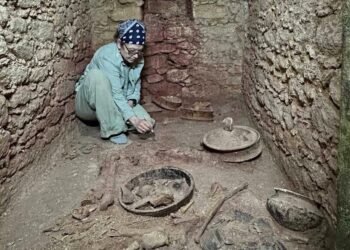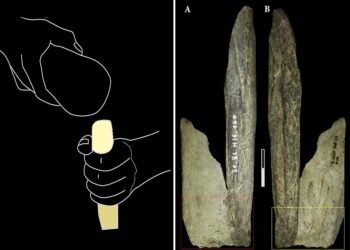A Roman parade mask has been found by an amateur archaeologist in the Albeni commune, located in the Gorj County of Romania.

Only a few parade masks have been discovered in Romania, and they were all made of bronze. This is the country’s first iron parade mask discovery.
Experts believe the mask dates from the second or third century CE, when parts of Romania was located in the Roman province of Dacia, also known as Dacia Traiana. Emperor Trajan conquered the region between CE 98 and 117 following two campaigns that devastated the Dacian Kingdom of Decebalus.
Scientists have previously discovered a Roman helmet, weapons, coins, pottery, and an other type of vessel in the same place. There is clear evidence of Roman occupation here.
The mask’s creator added perforated holes around the nostrils for breathing, as well as slits around the eyes and mouth. A semi-circular divot at the top center of the mask used to allow the user to flip it up.
The mask was most likely worn by a soldier stationed in the Roman fort of Bumbești-Jiu, today known as Vârtop, or a military outpost somewhere nearby, according to Gheorghe Calotoiu of the Gorj County Museum.
“It is a Roman ritual mask, which roughly dates back to the 2nd and 3rd centuries after Hirstos,” said Dumitru Hortopan, director of the Gorj County Museum.
“It will undergo a restoration process in the laboratory next to the Romanian Academy, after that it will be classified and exhibited in the permanent exhibition of the Gorj county museum.”
In Romania, any find older than 100 years must be surrendered to the relevant authorities within 72 hours, with 30% of the item’s value rewarded. The reward increases to 45% when a find is classified as treasure.
























